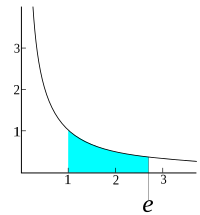
3D figure of epilepsy syndromes
Sign Up to like & getrecommendations! Published in 2022 at "Epilepsia Open"
DOI: 10.1002/epi4.12665
Abstract: We propose an instructive figure that summarized the classification of epilepsy syndromes according to the 2022 report of the ILAE Task Force on Nosology and Definitions. Our aim is to present on the same figure… read more here.
Keywords: classification; nosology; epilepsy; figure epilepsy ... See more keywords

Photosensitive Epilepsy Syndromes Mimicking Motor Tics
Sign Up to like & getrecommendations! Published in 2020 at "Movement Disorders Clinical Practice"
DOI: 10.1002/mdc3.13053
Abstract: About 3% of children are clinically diagnosed with tics, although at least 1 observational study suggests that the prevalence may be much higher—up to 25%. Motor tics may manifest as simple movements (eg, blinking, head… read more here.
Keywords: epilepsy syndromes; motor tics; movement; photosensitive epilepsy ... See more keywords

Modifier genes in SCN1A‐related epilepsy syndromes
Sign Up to like & getrecommendations! Published in 2020 at "Molecular Genetics & Genomic Medicine"
DOI: 10.1002/mgg3.1103
Abstract: SCN1A is one of the most important epilepsy‐related genes, with pathogenic variants leading to a range of phenotypes with varying disease severity. Different modifying factors have been hypothesized to influence SCN1A‐related phenotypes. We investigate the… read more here.
Keywords: epilepsy; epilepsy syndromes; related epilepsy; modifier genes ... See more keywords

Neonatal Epileptic Encephalopathies.
Sign Up to like & getrecommendations! Published in 2021 at "Seminars in pediatric neurology"
DOI: 10.1016/j.spen.2021.100880
Abstract: The majority of neonatal seizures are related to common diagnoses, including hypoxic-ischemic encephalopathy and intraventricular hemorrhage. While relatively uncommon, neonatal epileptic encephalopathies represent an important group of neonatal seizure disorders that require immediate diagnosis and… read more here.
Keywords: epilepsy syndromes; neurology; neonatal epileptic; epileptic encephalopathies ... See more keywords

Neonate, Infant, Childhood, and Adolescent Epilepsy Syndromes
Sign Up to like & getrecommendations! Published in 2023 at "The Neurodiagnostic Journal"
DOI: 10.1080/21646821.2023.2172951
Abstract: ABSTRACT Epilepsy syndromes are defined either by a specific set of symptoms or by the area of the brain where the seizures originate. Some of the symptoms include types of seizures and age of seizure… read more here.
Keywords: infant childhood; neonate infant; epilepsy; childhood adolescent ... See more keywords

Methodology for classification and definition of epilepsy syndromes with list of syndromes: Report of the ILAE Task Force on Nosology and Definitions
Sign Up to like & getrecommendations! Published in 2022 at "Epilepsia"
DOI: 10.1111/epi.17237
Abstract: Epilepsy syndromes have been recognized for >50 years, as distinct electroclinical phenotypes with therapeutic and prognostic implications. Nonetheless, no formally accepted International League Against Epilepsy (ILAE) classification of epilepsy syndromes has existed. The ILAE Task… read more here.
Keywords: task force; methodology; nosology; epilepsy ... See more keywords

ILAE classification and definition of epilepsy syndromes with onset in neonates and infants: Position statement by the ILAE Task Force on Nosology and Definitions
Sign Up to like & getrecommendations! Published in 2022 at "Epilepsia"
DOI: 10.1111/epi.17239
Abstract: The International League Against Epilepsy (ILAE) Task Force on Nosology and Definitions proposes a classification and definition of epilepsy syndromes in the neonate and infant with seizure onset up to 2 years of age. The… read more here.
Keywords: classification; etiology; nosology; ilae task ... See more keywords

International League Against Epilepsy classification and definition of epilepsy syndromes with onset at a variable age: position statement by the ILAE Task Force on Nosology and Definitions
Sign Up to like & getrecommendations! Published in 2022 at "Epilepsia"
DOI: 10.1111/epi.17240
Abstract: The goal of this paper is to provide updated diagnostic criteria for the epilepsy syndromes that have a variable age of onset, based on expert consensus of the International League Against Epilepsy Nosology and Definitions… read more here.
Keywords: variable age; nosology; epilepsy; international league ... See more keywords

International League Against Epilepsy classification and definition of epilepsy syndromes with onset in childhood: Position paper by the ILAE Task Force on Nosology and Definitions
Sign Up to like & getrecommendations! Published in 2022 at "Epilepsia"
DOI: 10.1111/epi.17241
Abstract: The 2017 International League Against Epilepsy classification has defined a three‐tier system with epilepsy syndrome identification at the third level. Although a syndrome cannot be determined in all children with epilepsy, identification of a specific… read more here.
Keywords: classification; nosology; epilepsy; international league ... See more keywords

A Review of Targeted Therapies for Monogenic Epilepsy Syndromes
Sign Up to like & getrecommendations! Published in 2022 at "Frontiers in Neurology"
DOI: 10.3389/fneur.2022.829116
Abstract: Genetic sequencing technologies have led to an increase in the identification and characterization of monogenic epilepsy syndromes. This increase has, in turn, generated strong interest in developing “precision therapies” based on the unique molecular genetics… read more here.
Keywords: therapies monogenic; epilepsy syndromes; epilepsy; monogenic epilepsy ... See more keywords